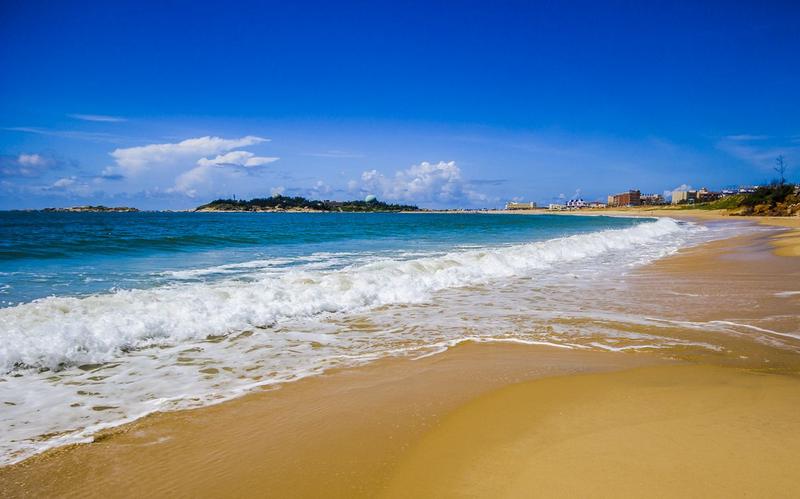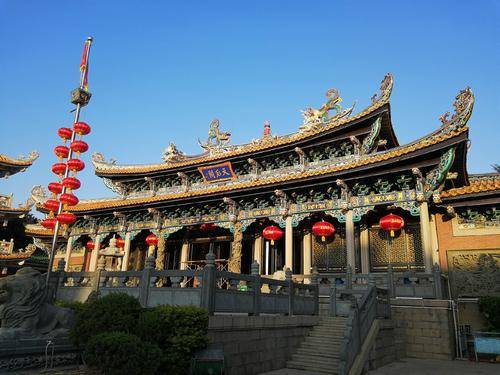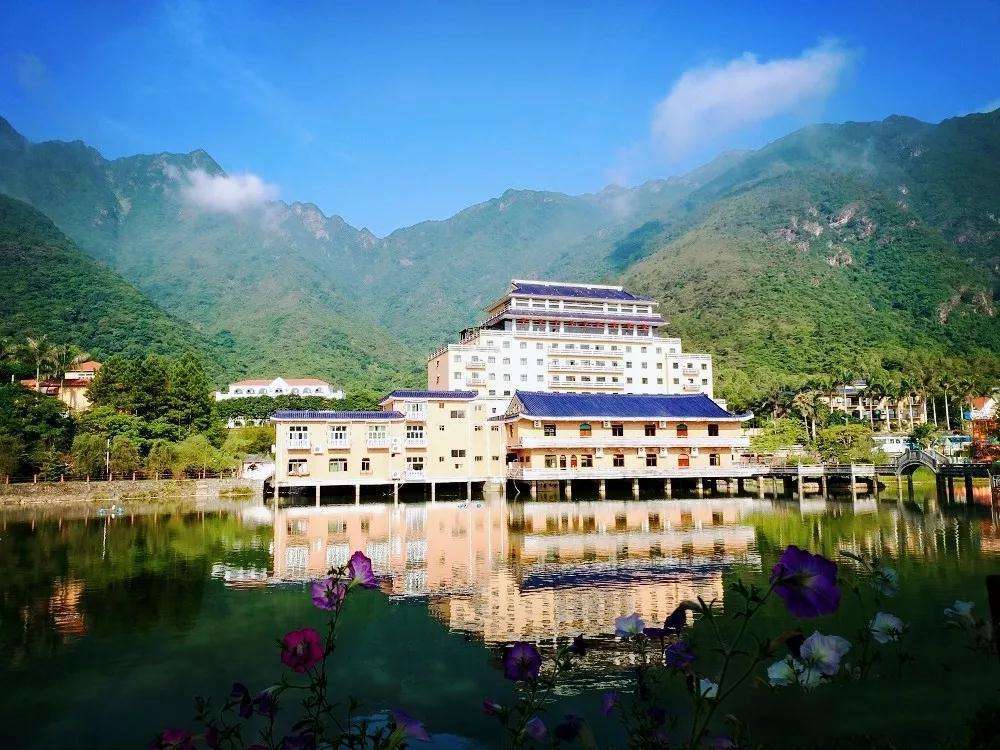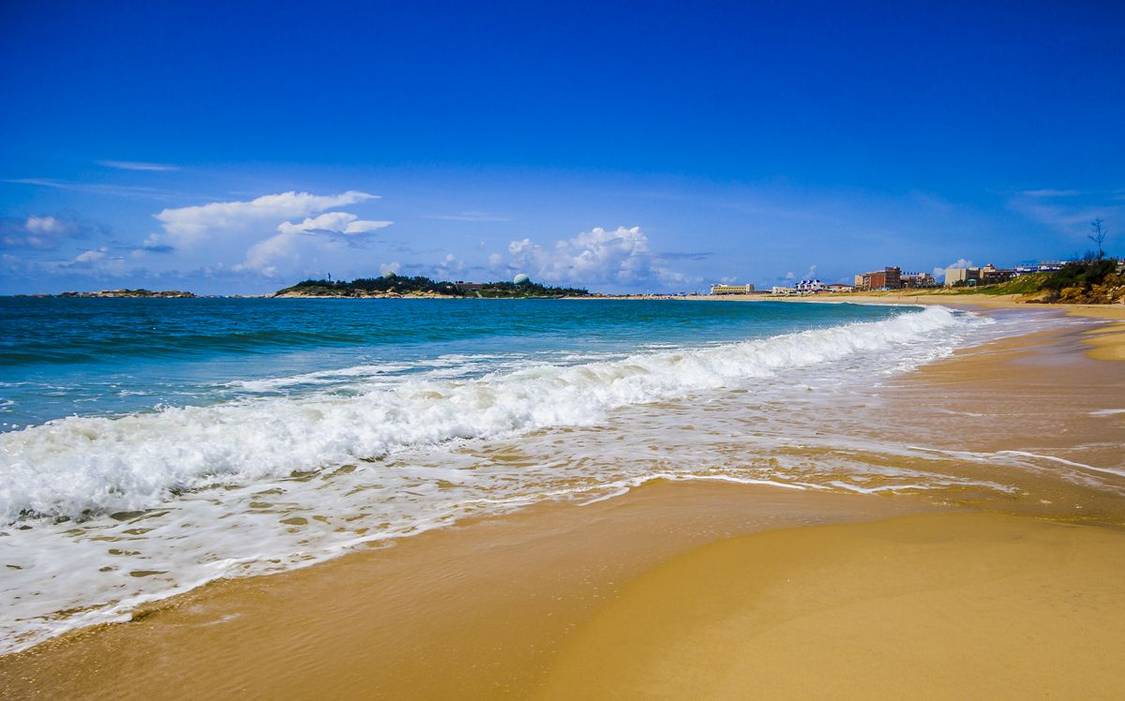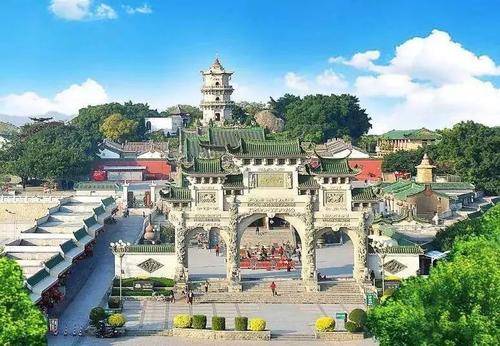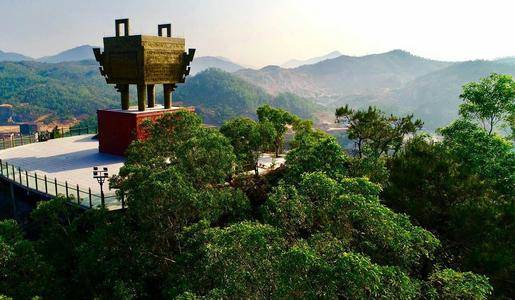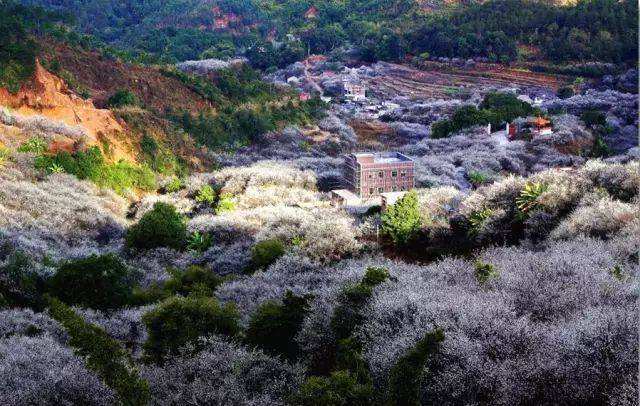Fengshan Ancestral Temple
Fengshan is located in the southeast of Shanwei, by the side of Pingqing Lake. It is a major attraction on the golden coastline of eastern Guangdong. Although the mountain is not high, it is named after its resemblance to a phoenix spreading its wings. Climbing the mountain offers a distant view of the South China Sea, where the water and sky merge, and boats shuttle back and forth. A closer look reveals the new appearance of the ancient town of Shanwei, with towering buildings and lush trees, creating a refreshing and pleasant atmosphere! Many people in Shanwei have ancestral roots in Fujian. In the late Ming and early Qing dynasties, the 'Fengshan Ancestral Temple' was built at the foot of Fengshan. Fishermen and merchants have long worshipped Mazu, so the incense has never ceased. It is a famous Mazu temple in Guangdong. With the expansion of Shanwei Port's maritime routes, Fengshan Ancestral Temple has become a sacred place for the people of Shanwei, compatriots from Taiwan, Hong Kong, and Macau, as well as overseas Chinese, to seek their roots and pay homage to their ancestors.
Lianhua Mountain Resort
Lianhua Mountain Resort is located in Lianhua Mountain Provincial Forest Park, Haifeng, Shanwei, Guangdong Province. It is the first national four-star tourist hotel in Shanwei and currently the highest-rated resort hotel in the city. In 2007, it became the designated hotel for accommodation and conferences for central government officials traveling in Guangdong. The resort was meticulously planned, designed, and solely funded by Mr. Cai Yangshan, a Chinese-American and renowned painter, driven by his deep love for his homeland and dedication to building his hometown. It is a vacation destination developed in tandem with the forest park scenic area, seamlessly integrated into one.
Honghai Bay Zhelang Peninsula Marine Park
The park boasts a 72-kilometer coastline and is located at the sea-land transportation hub of eastern Guangdong. It is situated between the two economic special zones of Shenzhen and Shantou, and the economically developed regions of Hong Kong and Taiwan. This strategic location lays a solid foundation for Shanwei's regional development strategy of integrating into the Pearl River Delta and coordinating with northeastern Guangdong.
Xuanwu Mountain
Xuanwu Mountain, located in Jieshi Town, Lufeng City, Shanwei City, Guangdong Province, has Yuanshan Temple built on the southern slope of Xuanwu Mountain. Covering an area of 15 hectares, it is a religious activity site that combines both Buddhist and Taoist practices. It is also a historic site in Shanwei City, renowned both domestically and internationally, especially in Southeast Asia, and serves as a center of Buddhist belief for people who speak the Minnan dialect. The temple houses a large number of historical relics and has been listed as a national key cultural relic protection unit. With economic development, the number of tourists is increasing.
Tongding Mountain
Shanwei Tongding Mountain Tourist Area is the backyard of Shanwei citizens and the first choice for tourists for leisure, vacation, and sports. Tongding Mountain closely revolves around the six major tourism elements of 'food, accommodation, transportation, travel, shopping, and entertainment', integrating the local cultural characteristics of the urban area. It boasts beautiful scenery while being rich in wild interest, making it deeply loved by people. Tongding Mountain is located in Pubian, Hongcao Town, covering an area of 120 hectares.
Luodong Secluded Plum Garden
Luodong Secluded Plum Garden Scenic Area is located in Luodong Village, Shuichun Town, Luhe County, Shanwei City, Guangdong Province, known as the hometown of green plums in China. It borders Puning City to the south and Dongkeng Town to the west, and is one of the main sources of the Rongjiang water system. The entire village has over ten thousand acres of green plum plantations, making it the largest contiguous plum garden in eastern Guangdong. The garden's natural landscapes of mountains, water, rocks, and forests are uniquely magical, with rich tourism resources and great development prospects for leisure agriculture and rural tourism.
